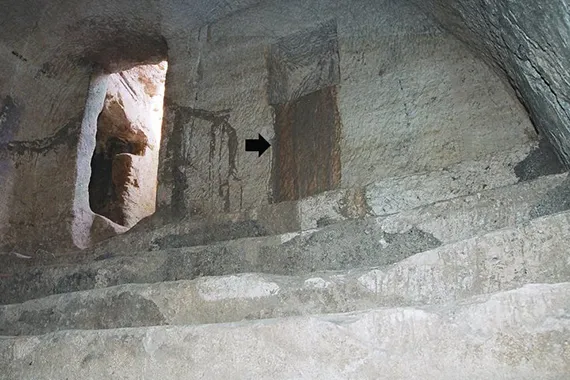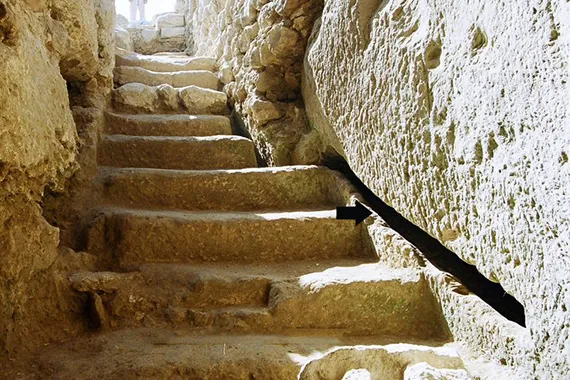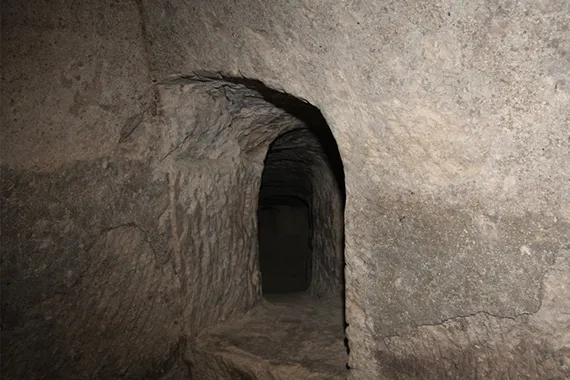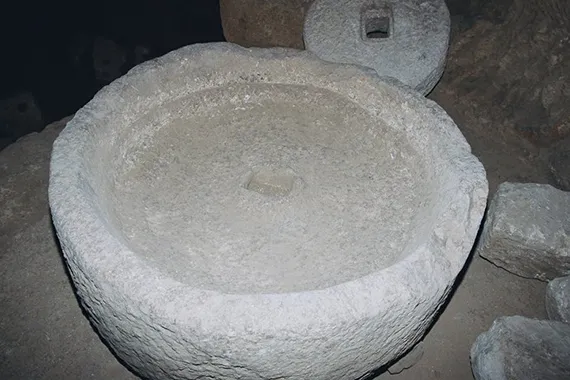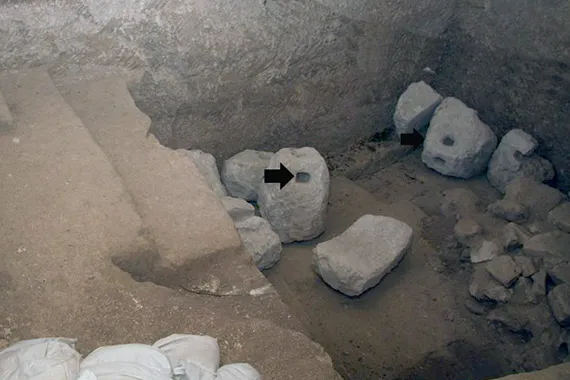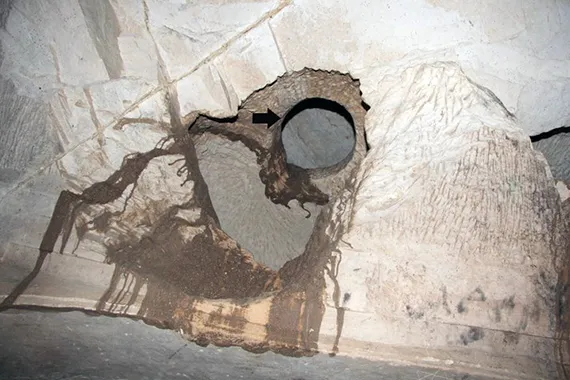
Ritual Bath
Jewish law attributes great significance to matters of purity; this was especially the case during the Second Temple period. Purity touched on all aspects of life, not the least of which was food and drink. As the villages’ olive oil may well have reached Jerusalem, carried by pilgrims traveling to the Temple Mount, it was vital to prepare it under the purest conditions.
The first stage was to ensure that the workers themselves be pure, and this would have been achieved by immersing in a ritual bath prior to beginning their labor. Indeed, the phenomenon of ritual baths built near an oil press (or wine press) is known from the archaeological record in Israel, and we therefore were not surprised at the proximity of the Beit Lehi ritual bath to the oil press.
Beit Lehi’s ritual bath is particularly impressive for two reasons: it is one of the largest known (and keep in mind that this is a rural, peripheral site), and it was preserved almost unscathed. It was likely constructed shortly after the Hasmonean conquest of the region in the late second century BC and went out of use in either the first or second century AD, at which time a hiding tunnel was carved into one of the bath walls, canceling out its use. The bath contains seven narrow steps stretching along its entire width. Each step was lathered with a thick layer of plaster, and some areas of plaster are also preserved on the bath walls themselves. Only the top of the first step was exposed when excavations began.
The hewn tunnel discovered in the bath’s north corner is some twenty feet in length. It is remarkably free of debris, and leads to a rock-hewn chamber. Excavation of the chamber is slow-going since it was completely filled with packed earth and debris and excavation has been solely via the tunnel. Nevertheless, we have succeeded in exposing three wall faces and a bit of the ceiling. One of our goals for future seasons is to locate the entrance from above ground and thus make faster progress. According to tradition, a mikveh had to contain enough water to cover the entire body of an average-sized man. The water was not allowed to be placed in a mikveh by human means, so it was had to be connected to a spring or well of naturally occurring water — like rainwater.
The mikveh shown here has a water channel cut into the base of the wall of the mikveh next to the stairway. Rainwater would flow into the channel and deposit into the mikveh through a carved rectangular opening. Particularly in the dry months, stagnant rainwater could hardly have been hygienic, but would still have met the legal requirements to purify. Ritual purity and hygiene can be two very different categories in Judaism. On the floor of the Miqveh, stone vessels were discovered that suggested that water was scooped into the vessels and then dumped over the body when water was scarce.
Video
Video Transcript
We are on top of the subterranean complex of the olive press and the ritual bath uncovered by us in 2005. The excavation of the site actually started here in October 2005, after I noticed antique looters were digging here illegally. After a few days of excavation we found a shaft hewn in the rock that lead to a subterranean tunnel. When we crawled inside the tunnel we came to the ceiling, to the top of the subterranean complex, first to the olive press and later to the ritual bath.
The olive press was established in the 2nd century B.C.E. by the Idumeans, who were a pagan people who lived in this area from the 4th and the 3rd century B.C.E. until the Hasmonean, the Maccabees, conquest in 112 B.C.E. Then the site became a Jewish site, and then they added the ritual bath attached to the olive press. Inside the olive press we uncovered three large presses and a huge crater that could hold one thousand pound of olives as well as an intact grinding stone next to it.
Next to the olive press we uncovered a Jewish ritual bath, where the people who worked in the olive press immersed themselves every day in order to be pure before they started work. It is very important in Judaism to be pure while you’re manufacturing olive oil. (Perhaps they will use this olive oil in the Temple in Jerusalem and in order to do that you have to be pure.) We uncovered a complete ritual bath, which includes a water channel, steps, a window where the water gets inside, and seven benches plastered with hydraulic plaster, and in the lower part of the ritual bath, the pool, where we found a few pure pottery cups that the people used when the level of the water was low. We find the link between the ritual bath and the olive press in order that the olive oil will be pure and kosher before it was sent to the Temple in Jerusalem.
Virtual Tour
The virtual tour for this location works on your computer web browser as well as a tablet or a phone. Best of all, it works on your headset. For instructions using an Oculus Quest, please see our virtual visit page.
Image Gallery
